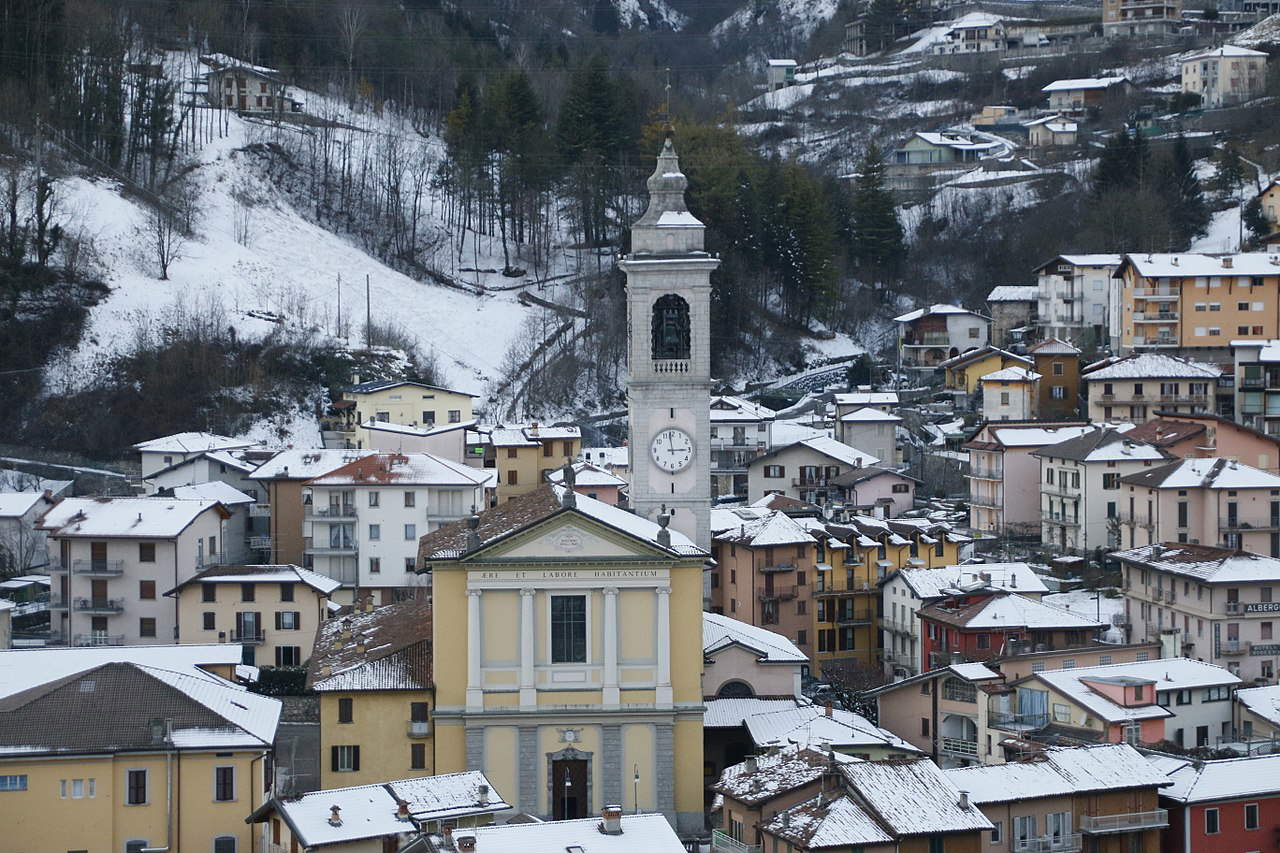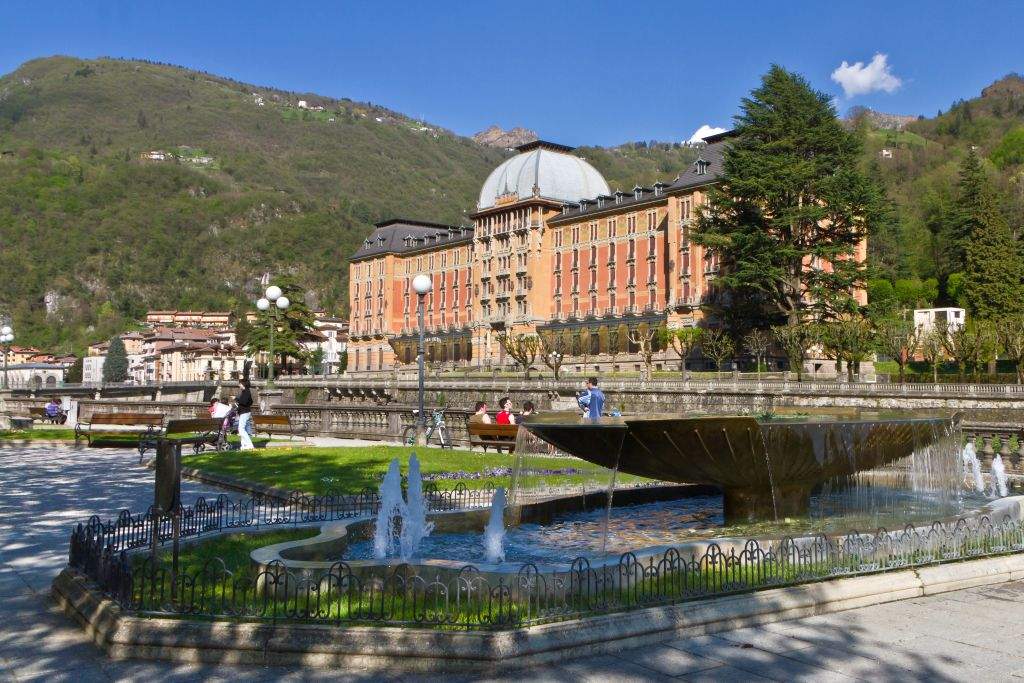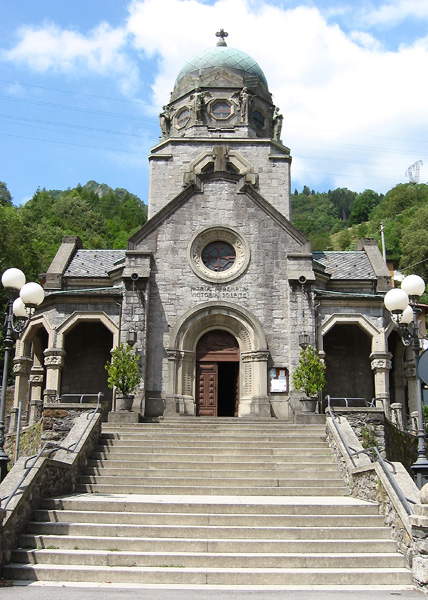San Pellegrino Terme: thermal waters, towering mountains and unparalleled style. Just 20 kilometers from Bergamo lies one of the most famous spas in the Belpaese. San Pellegrino Terme has been known for centuries for the quality of its waters, but it also has much more to offer. San Pellegrino Terme lies in the heart of the Brembana Valley, nestled along the banks of the Brembo River that bisects the town. All around San Pellegrino Terme it is the majesty of nature that dominates, but when you walk through the streets of the town to enrapture the visitor’s eye are also the many architectural gems that adorn its streets. In San Pellegrino one can still breathe in the magical atmosphere of the Belle époque of the early 20th century rendered to perfection by the facades of the many Art Nouveau buildings. Not to be missed then is a bath in the pools of the Qc Terme, over six thousand square meters dedicated to wellness among marvelous frescoes, colonnades and early 20th century ceilings. Unmissable then are the emotions that can be experienced by exploring, on foot or by bicycle, the many paths that start from San Pellegrino Terme and wind along the Brembana Valley. Here are some must-see stops during your stay in San Pellegrino Terme.
A striking example of Art Nouveau architecture, the municipal casino in San Pellegrino Terme has been one of the town’s most recognized symbols for more than a hundred years. Designed by architect Romolo Squadrelli, it was inaugurated in 1907 and is famous first and foremost for its iconic facade with its two tall towers reminiscent of the Monte Carlo casino. This is decorated with spectacular high reliefs in artificial stone, and there stands out, among other things, a tall wrought-iron flagpole by Alessandro Mazzucotelli. At the base, on the other hand, there are frescoes of flying deer that, like butterflies, symbolize Art Nouveau. Not to be outdone are also the interiors where, in an allegorical play of references to the place and the properties of its waters, the theme of ’joie de vivre’ is developed in every corner, among frescoes, sculptures, and refined furnishings.

Dedicated to the figure of St. Peregrine, martyr and first bishop of Auxerre, the church is now the town’s main house of worship and its origins are traced back as far as the year 1000. What can be admired today, however, is a magnificent 18th-century church that went on to expand and completely change the appearance of an earlier building dating back to the 15th century. Long affected by major restoration work today the church of St. Peregrine of Auxerre presents a facade characterized by a central part tripartite by four pilasters covered in Poltrano stump and slightly advanced with respect to the two lateral parts. The main entrance, in carved black marble, has stone pilasters and cornices. The interior has a single nave divided into five bays and preserves important works of art made since the 16th century.

This seven-story behemoth is located on the left bank of the Brembo River, on the opposite side of the casino. Also dating back to the early 20th century and created by the pencils of architect Romolo Squadrelli and engineer Luigi Mazzocchi, the Grand Hotel is distinguished not only by its grandeur but also by the variety of materials used and the richness of its choruses in a perfect example of Art Nouveau style. The Grand Hotel has a facade longer than a soccer field adorned with dozens of statues, caryatids, zoomorphic elements, putti and festoons and is connected to the Casino and the hot spring by a bridge. The interior has a strict symmetrical distribution of rooms, with the atrium and grand staircase in the center and the living and dining rooms on either side. Many illustrious people have stayed in these rooms, including Queen Margherita of Savoy and again Pietro Mascagni, Luigi Cadorna, Eugenio Montale, Salvatore Quasimodo, Federico Fellini and Giulietta Masina, and even Helenio Herrera’s ’Grande Inter’.

Now known as the “Temple of the Fallen,” this scenic building dates from 1924 and is dedicated to those who fell in the war. It is a military shrine where the remains of the fallen of the two world wars are kept. The facade has a very animated course and ends with a deco dome. The main elevation starts at the end of a wide staircase with a round-headed portal and rose window above, while on the sides is the arcade, which gives rise to the two side elevations, where a round-headed portal opens with a tripartite window above. Around the dome, on the other hand, eight winged figures, modeled by sculptor Giuseppe Siccardi, stand out, holding the symbols of war and victory. The interior is also richly decorated starting with a grand mosaic in the cup of the dome depicting the Eternal Father, while along the walls we find mosaics depicting biblical episodes and war scenes.

A fascinating journey through the history of a unique territory. This is what the Brembano Museum of Natural Sciences in San Pellegrino Terme offers. First and foremost, inside you can admire a valuable collection of fossil finds unearthed in excavations carried out in the Brembana Valley. The approximately 1,500 catalogued pieces are unique specimens of high scientific value that are gathered here in a dozen showcases and comprehensively document the birth of the Brembana Valley, a territory that emerged from the seabed during the Alpine orogeny. All the paleontological finds on display range from the end of the Permian period to the end of the Triassic, that is, from 235 to 195 million years ago. The paleontological one, however, is not the only section of which the museum is composed; among its rooms it also gives space to a fine collection of butterflies from the Brembana Valley and a permanent display of panels with photographic documentation of Bergamo’s alpine flora.

 |
| San Pellegrino Terme, what to see: five-step itinerary |
Warning: the translation into English of the original Italian article was created using automatic tools. We undertake to review all articles, but we do not guarantee the total absence of inaccuracies in the translation due to the program. You can find the original by clicking on the ITA button. If you find any mistake,please contact us.